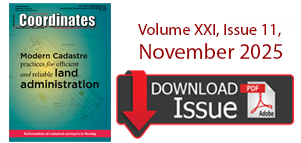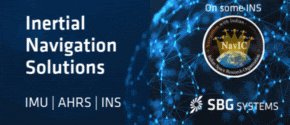| Perspective | |

The growing importance of geospatial technology and challenges
Geospatial education is often incorporated into engineering, geography, or environmental science programs, leading to inconsistencies in knowledge and skills |
 |
|
Geospatial technology has become an indispensable tool across various sectors, including transportation, urban planning, sustainable development, environmental monitoring, resource management, surveillance, security, and legal frameworks. Its ability to provide accurate positioning, precision analytics, and spatial intelligence enhances governance, decisionmaking, and resource optimization.
Following the success of India’s Chandrayaan mission, there has been a notable surge in student interest in geospatial technology. Many students now recognize its role in space exploration and India’s scientific advancements. However, despite this enthusiasm, geospatial programs at both undergraduate and postgraduate levels continue to face challenges in attracting students, as they often prioritize other branches of engineering and science over geospatial studies.
Recognizing its significance, the Centre for Environment at Jawaharlal Nehru Technological University Hyderabad (JNTUH), Hyderabad, Telangana has been at the forefront of geospatial education. Since 2004, Centre is offering a Master’s program (M.Tech) in Environmental Geomatics, and in 2023, it expanded its academic offerings by introducing an undergraduate program (B.Tech) in Geomatics, reinforcing its commitment to advancing geospatial education and research.
Geospatial Technology as a Multidisciplinary Science
Geospatial Technology and Science (GI Tech/GI Science) is inherently multidisciplinary, integrating fields such as Computer Science, Engineering, Information Technology, Geography, and Geodesy. However, rather than being recognized as a distinct scientific and technological domain, it is often treated as a tool applied selectively in various disciplines. This limited perspective has hindered its recognition as an independent academic field, affecting its growth, research funding, and institutional support.
Acknowledging this gap, regulatory bodies like AICTE and DST have taken significant steps to establish geospatial technology as a distinct discipline. The inclusion of Geomatics Engineering under the Graduate Aptitude Test in Engineering (GATE) is a milestone in formalizing geospatial education and enhancing career prospects for students in this domain.
India’s Growing Demand for Geospatial Professionals
The National Geospatial Policy 2022 (NGP 2022) aims to harness geospatial technology for governance, economic growth, and sustainable development. To achieve this vision, India needs a skilled workforce with technically proficient graduates and industry-ready professionals in geospatial technology for governance, economic growth, and sustainable development. To achieve this vision, India needs a skilled workforce with technically proficient graduates and industry-ready professionals in geospatial technology.
The sector is experiencing unprecedented growth, driven by technological advancements and increased adoption across industries. Government initiatives and collaborations with academia and industry further underscore the growing demand for geospatial professionals.
However, despite this rising need, the sector faces several challenges, including skill gaps, outdated curricula, limited industry collaboration, and a shortage of research opportunities.
Challenges in Geospatial Education Faced by Universities and Higher Educational Institutions (HEIs)
1. Lack of a Standardized Curriculum
Geospatial education is often incorporated into engineering, geography, or environmental science programs, leading to inconsistencies in knowledge and skills. The absence of a universally accepted framework for undergraduate and postgraduate programs results in varying levels of proficiency. Furthermore, rapid technological advancements in AI, Machine Learning (ML), the Internet of Things (IoT), cloud computing, advanced visualization techniques, and GeoAI necessitate frequent curriculum updates. Without structured curriculum reforms, graduates risk being underprepared for industry demands.
2. Incomplete Integration in Academic Curricula
The National Education Policy (NEP) 2020 emphasizes interdisciplinary education, yet geospatial technology remains inadequately integrated into engineering and science curricula. While it intersects with various fields, its fragmented inclusion prevents students from gaining a holistic understanding. A more structured and cross-disciplinary approach is required to ensure that students acquire relevant skills for emerging industry needs.
3. Shortage of Skilled Faculty
There is a significant faculty shortage at both the undergraduate and postgraduate levels. As an interdisciplinary domain, geospatial education requires expertise in emerging fields such as Spatial AI, Digital Twins, and cloud-based geospatial analytics. The rapid evolution of technology makes it challenging for faculty to stay updated, further compounded by limited professional development programs and industry academia collaborations. Addressing this issue requires structured faculty training, industry partnerships, and enhanced support for research and curriculum development.
4. Limited Infrastructure and High Cost of Software
Many institutions, particularly state universities, lack access to highperformance computing, cloudbased GIS, and advanced geospatial software due to resource constraints. Proprietary GIS software and high-end computing resources are expensive, forcing institutions to rely on outdated tools and older software versions. This restricts students’ exposure to modern technologies, impacting their practical skills and industry readiness. Investment in modern infrastructure, adoption of open-source alternatives, and industry partnerships are crucial to bridging this gap.
5. Limited Practical Training and Field Exposure
Geospatial education in many institutions is heavily theory-focused, with insufficient hands-on training in advanced technologies such as drones, LiDAR, and satellite data analysis. A lack of realworld applications and field-based learning limits students’ ability to tackle practical challenges. Enhancing field training, industry-led workshops, and access to cutting-edge tools is essential for improving employability and preparing students for industry demands. However, universities are failing to meet these requirements.
6. Low student enrolment and lack of awareness of career opportunities
Despite its growing significance, geospatial technology is not widely promoted as a viable career path, leading to low student enrolment in GIS and remote sensing courses. Many students remain unaware of the vast opportunities in the geospatial industry, and universities lack strong outreach programs to attract talent.
7. Limited Internship and Placement Opportunities
Most geospatial companies prefer experienced candidates, making it difficult for fresh graduates to secure employment. Additionally, the lack of structured internship and apprenticeship programs further hinders their transition into the workforce. Strengthening industry-academia collaborations, creating structured internship opportunities, and promoting mentorship programs can help bridge this employment gap.
To improve placements for our Master’s students in Geomatics, it’s essential to highlight their specialized expertise and the growing industry demand for geospatial professionals. Many companies train candidates from other fields for these roles, but hiring domain experts directly adds greater value. Strengthening industry connections and showcasing these skills can create more opportunities in this evolving field.













 (1 votes, average: 4.00 out of 5)
(1 votes, average: 4.00 out of 5)





Leave your response!